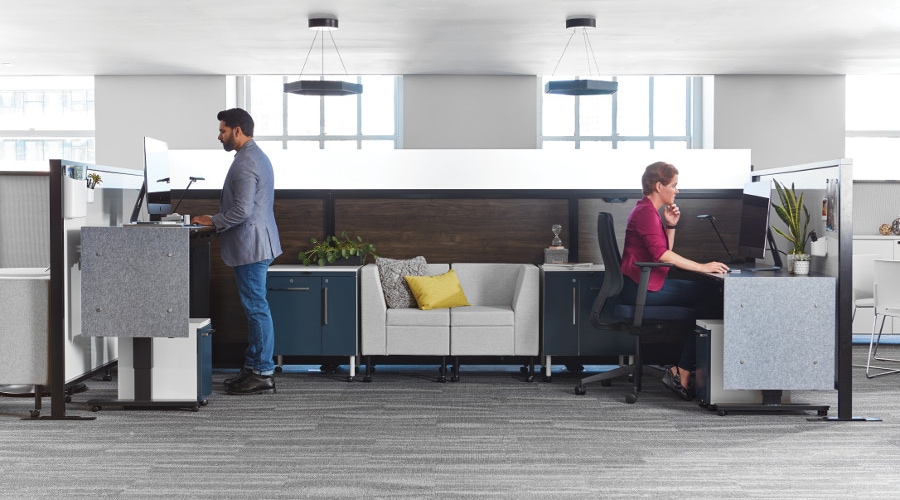Active Design and the Pursuit of Talent

The rise of online products and services – everything from groceries and Star Wars t-shirts to mortgages -- means more businesses than ever are on the hunt for technology-savvy talent, putting further pressure on an already tight labor pool.
It’s not just computer companies versus computer companies vying for talent. Banks, drug makers and car companies are all on the hunt for technology workers as end products become increasingly advanced and a sizeable chunk of the sales market moves online.
With the U.S. unemployment rate sitting under 4 percent, it’s a buyers’ market for qualified job candidates who are scrutinizing potential employers on everything from pay to company culture and choices surrounding how, and where, they work.
The office environment - what it looks like, work options offered and how employees move around the space - is an increasingly important part of the picture candidates are studying while making a job choice.
Staff who are happy, healthy and not overly stressed will be productive and likely stick around. A recent survey from officer supplier Staples indicated 41 percent of workers would take a 10 percent pay cut to work for an organization emphasizing wellness.
A focus on wellness helps trim two main business expenses: the rising cost of health care and the financial sting of employee turnover. Architects and designers are acutely aware of the role wellness plays in the bottom line to companies: KI recently surveyed nearly 400 firms and three-quarters say they promote wellness as a standard practice when discussing design with clients.
Three things top the list of wants from today’s job seekers: strong work-life balance, wellness and working with state-of-the-art technology. All are areas tech companies improved in recent years to attract workers.
The wider business world has taken note of what’s happened in tech. Office layouts emphasizing Active Design, design principles in support of a healthier workforce, and overall wellness have bubbled over from that world and influenced the way architects, designers and executives look at the modern office in all business sectors.
Many of the workplace ideas and practices adopted by tech companies are integral parts of the conversation between businesses and designers when looking at new or revamped spaces. Discussions run the gamut from onsite gyms and health clinics to office layouts and environments intended to get employees out of their work stations and moving around on a regular basis.
Options are varied. On one end are big-ticket additions like gyms, cafeterias and daycares. On the other are subtler – but equally important - design principles like creating open, visually-appealing staircases to influence workers to walk up to the next floor rather than taking an elevator. These techniques and others for improving wellness and productivity fall into key areas of KI's Active Design philosophy. Principles include building spaces that allow more natural light in the work environment and offering healthy foods on site.
Tied to many of these changes are increased use of height-adjustable furniture. Once reserved for special use or for people with chronic health issues, sit-stand desks and adjustable work stations have become a staple in many new work environments, both as an extension of wellness practices and out of necessity.
With a larger portion of office real-estate going to things that make work attractive (think gyms and open meeting spaces), workspaces are getting smaller – down to a single worksurface at some tech firms. Today’s employees have less need (or ability) to move horizontally, but height-adjustable solutions allow them to sit or stand during the day, one of the main tenants of Active Design.
Expect more changes to the office in coming year. Looking forward at design trends for 2019 we expect the increased use of bold colors and new textures, biophilia, focused on bringing more nature – plants, sunlight and natural materials like wood and stone - into the workplace.
Keep an eye out for continued change from inside the walls of tech businesses, too. The sector will undoubtedly make advancements in areas like artificial intelligence and virtual reality which will impact how we live and work; not unlike the workplace re-design the industry helped launch that continues to ripple through the wider business world.
Click to learn more about KI's 9 principles of Active Design.
Subscribe
Stay up to date with the latest trends and more.



